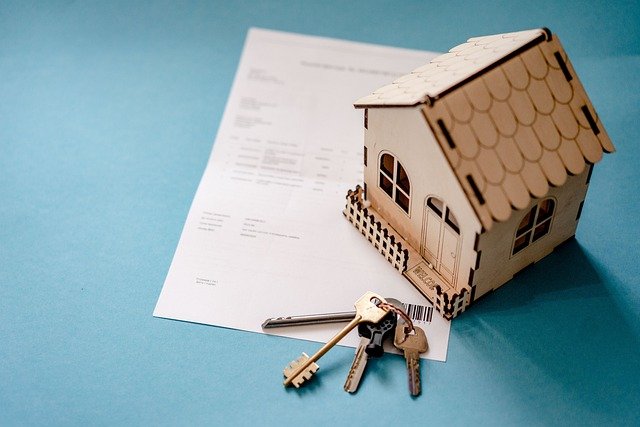Need Help Paying Rent: Discover Assistance Options
Facing financial challenges that make it difficult to keep up with rent payments can be stressful and overwhelming. Fortunately, various rent assistance programs and resources are available to help individuals and families maintain stable housing during tough times. This article explores different options for rent support, eligibility criteria, and how these programs can provide crucial aid during financial hardship.

Where can you find rent assistance programs in your area?
Rent assistance programs are often available through multiple channels, including government agencies, non-profit organizations, and local community groups. To find support in your area, start by contacting your local Department of Social Services or Housing Authority. These agencies can provide information about state and federally funded rent assistance programs, such as the Emergency Rental Assistance Program (ERAP) or Housing Choice Voucher Program (Section 8). Additionally, many cities and counties offer their own local rent assistance initiatives, so check with your municipal government’s website or housing department for area-specific resources.
Who typically qualifies for emergency rental aid?
Eligibility for emergency rental assistance can vary depending on the specific program and funding source. However, most programs generally consider factors such as income level, employment status, and housing situation. Common qualifications may include:
-
Income at or below a certain percentage of the Area Median Income (AMI)
-
Experiencing financial hardship due to job loss, reduced work hours, or unexpected expenses
-
Risk of homelessness or housing instability
-
Proof of residency in the area where assistance is sought
-
Valid lease agreement or rental contract
Some programs may also prioritize households with children, elderly individuals, or those with disabilities. It’s important to note that eligibility criteria can change, especially during times of widespread economic distress or natural disasters.
How can rent assistance help during financial hardship?
Rent assistance programs can provide crucial support during periods of financial difficulty, offering both immediate relief and long-term stability. These programs typically offer:
-
Direct rent payments to landlords on behalf of tenants
-
Assistance with past-due rent to prevent eviction
-
Help with utility payments related to housing
-
Support for security deposits or first month’s rent when securing new housing
By alleviating the burden of rent payments, these programs allow individuals and families to focus on other essential needs, such as food, healthcare, and job searching. This support can be instrumental in preventing homelessness and maintaining community stability during challenging economic times.
What types of rent assistance programs are available?
Rent assistance programs come in various forms, each designed to address different needs and circumstances:
-
Emergency Rental Assistance: Short-term help for those facing immediate eviction risk
-
Long-term Rental Subsidies: Ongoing support to make rent more affordable (e.g., Section 8 vouchers)
-
Rapid Re-housing Programs: Assistance for those experiencing homelessness to quickly secure stable housing
-
Eviction Prevention Programs: Legal aid and mediation services to help tenants avoid eviction
-
Transitional Housing: Temporary housing coupled with supportive services to help individuals move towards permanent housing
Understanding the different types of programs available can help you identify the most suitable option for your specific situation.
What documents are typically required when applying for rent support?
When applying for rent assistance, you’ll generally need to provide documentation to verify your eligibility and need. While requirements may vary by program, common documents include:
-
Proof of income (pay stubs, unemployment benefits statements, tax returns)
-
Photo identification
-
Social Security numbers for all household members
-
Current lease agreement or rent statement
-
Utility bills (if seeking utility assistance)
-
Proof of financial hardship (job loss notice, medical bills, etc.)
-
Bank statements
-
Landlord contact information
In Estonia, rent assistance programs may have specific requirements tailored to the country’s housing policies and social welfare system. It’s advisable to check with local authorities or social services for precise documentation needs in your area.
How do you apply for rent assistance, and what’s the process like?
The application process for rent assistance typically involves several steps:
-
Research available programs in your area
-
Contact the administering agency or visit their website to obtain application forms
-
Gather all required documentation
-
Complete the application thoroughly and accurately
-
Submit the application along with supporting documents
-
Attend an interview or assessment (if required)
-
Wait for the application to be processed and reviewed
-
Receive a decision on your eligibility and assistance amount
Processing times can vary depending on the program and demand. Some emergency assistance programs may offer expedited processing for urgent cases. It’s important to apply as soon as you anticipate needing help, as funds are often limited and distributed on a first-come, first-served basis.
In conclusion, rent assistance programs provide valuable support for individuals and families facing financial hardship. By understanding the available options, eligibility criteria, and application process, you can take proactive steps to secure the help you need to maintain stable housing. Remember that resources and programs may vary by location, so always check with local authorities and organizations for the most up-to-date information and assistance specific to your area.






